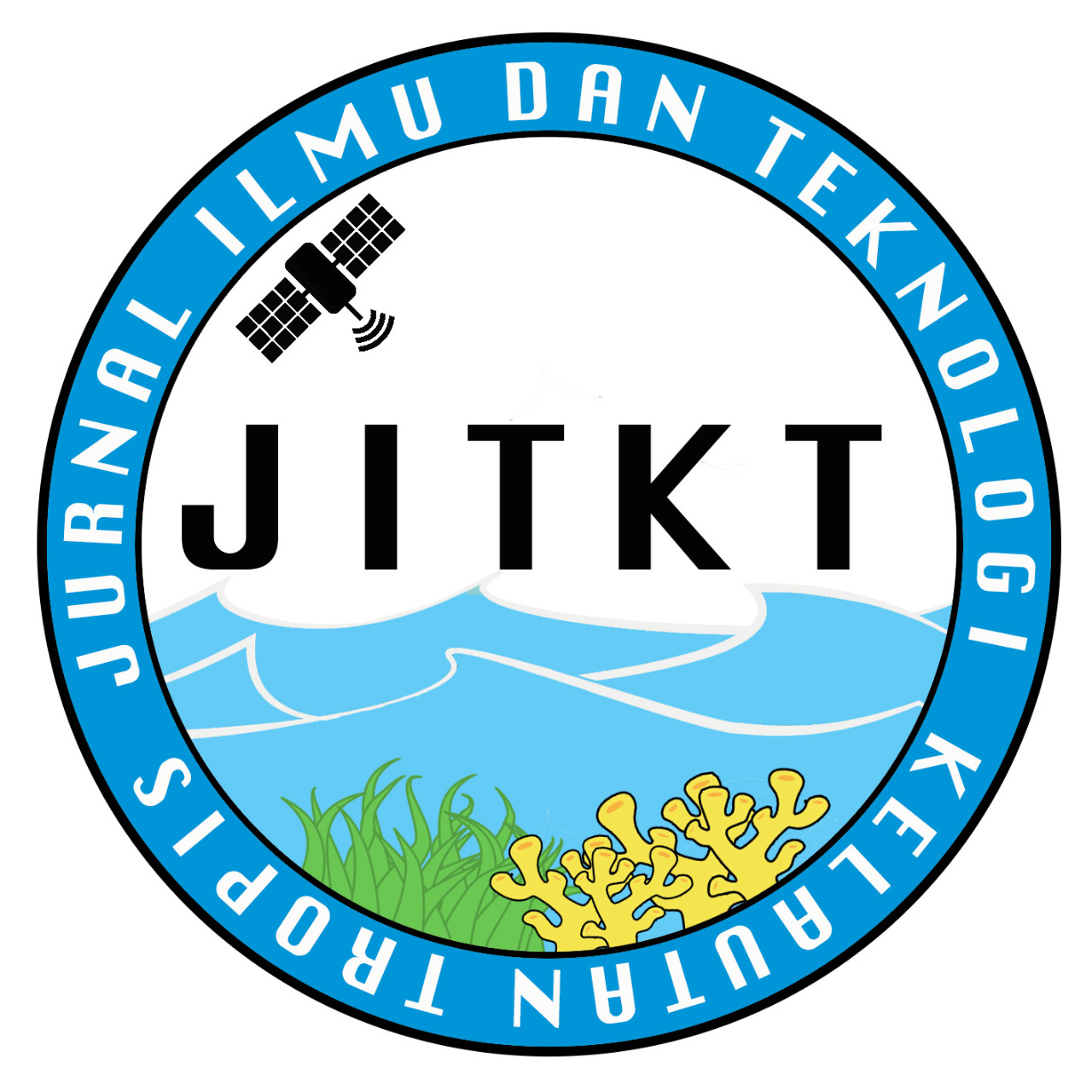APPLICATION OF SURFACE CONSISTENT DECONVOLUTION METHOD ON 2D SHALLOW SEISMIC DATA IN WAIPOGA WATER, PAPUA
Abstract
The seismic data generated during the acquisition contain complex wavelets and noise such as multiple which results in decreasing temporal resolution of the seismic section. This study aims to compare the application of Surface Consistent Deconvolution (SCD) and predictive deconvolution methods in increasing temporal resolution of seismic sections in 2D shallow water seismic data line C12, C21 and L18 of Waipoga Waters, Papua. This research applies SCD and predictive deconvolution methods. Surface Consistent Deconvolution is applied by decomposing seismic wavelets into source, receiver, offset and midpoint, while predictive deconvolution is applied by making predictions from seismic traces that containing short periods multiple. The seismic sections produced in this study show that the application of both predictive deconvolution methods and SCD can eliminate short-period multiple that found in seismic sections. The Surface Consistent Deconvolution method provides better results in increasing the temporal resolution of seismic sections than predictive deconvolution methods. These results are achieved because SCD method provides better results in compressing the wavelets, increasing the continuity of layers and sharpening the reflectors.
Downloads
References
Andradit, F.H., D.D. Warnana, & S.F Syaifuddin. 2018. Eliminasi efek multiple pada data seismik laut dangkal menggunakan metode 2D surface related multiple elimination (2D SRME). J. Teknik ITS, 7(1): 39-42. https://doi.org/10.12962/j23373539.v7i1.29621
Arifudin, A., I. Sota, & S.S. Siregar. 2015. Supresi multipel pada data seismik laut dengan metode dekonvolusi prediktif dan radon demultipel. J. Fisika Flux, 12(2): 100-108. https://doi.org/10.20527/flux.v12i2.2610
Chopra, S. & J.P. Castagna. 2014. Avo Investigations. In: Geophysics Series, Volume 16. Society of Exploration Geophysicists. 304 p. https://doi.org/10.1190/1.9781560803201
Chintia, B., O. Ivansyah, & J. Sampurno. 2017. Analisis parameter gap dalam tahapan dekonvolusi prediktif guna mereduksi short period multiple dan meningkatkan s/n ratio pada pengolahan data seismik refleksi 2D marine. J. Positron, 7(1): 25-33. https://doi.org/10.26418/positron.v7i1.20783
Kearey, P., M. Brooks, & I. Hill. 2002. An introduction to geophysical exploration. Third Edition. Wiley-Blackwell. 272 p. https://doi.org/10.1029/2003eo120005
Panjaitan, R.J.T., E. Agustine, Y. Rosandi, & T.B. Nainggolan. 2019. FK-filter and radon transform methods comparative study on 2D pre-stack migration gather of Kangean Waters data. IOP Conference Series: Earth and Environment Science, 311(1): 1-6. https://doi.org/10.1088/1755-1315/311/1/012060
Prakash, A., V. Singh, U.C. Saxena, & G. Sen. 1998. Impact of surface consistent deconvolution on wavelet stability and seismic attributes: a case study. J. Geohorizons, 3(2): 1-7. https://doi.org/10.3997/2214-4609.201408304
Romauli, A., H.M. Manik, & Subarsyah. 2016. Penerapan dekonvolusi spiking dan dekonvolusi prediktif pada data seismik multichannel 2D di Laut Flores. J. Teknologi Perikanan dan Kelautan, 7(2): 153-162. https://doi.org/10.24319/jtpk.7.153-162
Millar, J. & J.C. Bancroft. 2006. Long wavelength solutions to the surface consistent equations. SEG Technical Program Expanded Abstracts, 1: 3091–3094. https://doi.org/10.1190/1.2370169
Montana, C.A., G.F. Margrave, & D.C. Henley. 2006. Surface-consistent gabor deconvolution. CREWES Research Report, 18: 7-18. https://www.crewes.org/ForOurSponsors/ResearchReports/2006/2006-19.pdf
Nainggolan, T.B. & D. Setiady. 2017. Practical implementation of multiple attenuation methods on 2D deepwater seismic data: Seram Sea Case study. Bulletin of the Marine Geology, 32(1): 11-22. https://doi.org/10.32693/bomg.32.1.2017.365
Sidiq, A.P., H.M. Manik, & T.B. Nainggolan. 2019. Studi komparasi metode migrasi seismik dalam mengkarakterisasi reservoir migas di Blok Kangean, Laut Bali menggunakan inversi impedansi akustik berbasis model. J. Ilmu dan Teknologi Kelautan Tropis, 11(1): 205-219. https://doi.org/10.29244/jitkt.v11i1.23028
Taner, M.T. & F. Koehler. 1981. Surface consistent corrections. J. Geophysics, 46(1): 17-22. https://doi.org/10.1190/1.1441133
Yilmaz, Ö. 2001. Noise and multiple attenuation. in seismic data analysis. Chapter 6. Society of Exploration Geophysicists. 837-1000 pp. https://doi.org/10.1190/1.9781560801580
Copyright (c) 2021 Jurnal Ilmu dan Teknologi Kelautan Tropis

This work is licensed under a Creative Commons Attribution-ShareAlike 4.0 International License.
The author submitting the manuscript must understand and agree that the copyright of the article manuscript must be submitted/transferred to the Jurnal Ilmu dan Teknologi Kelautan Tropis. This work is licensed under the Creative Commons Attribution-ShareAlike 4.0 (CC BY-SA) International License in which the Author and Reader can copy and redistribute the material in any media or format, and remix, modify and build material for any purpose, but they must provide appropriate credit (citing articles or content), provide a link to the license, and indicate whether there is a change. If you mix, change, or create material, you must distribute your contribution under the same license as the original.



.png)














